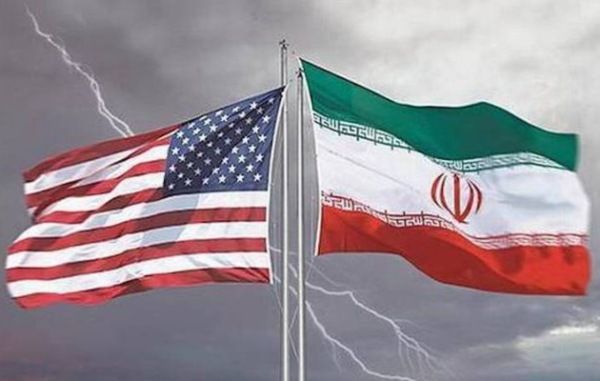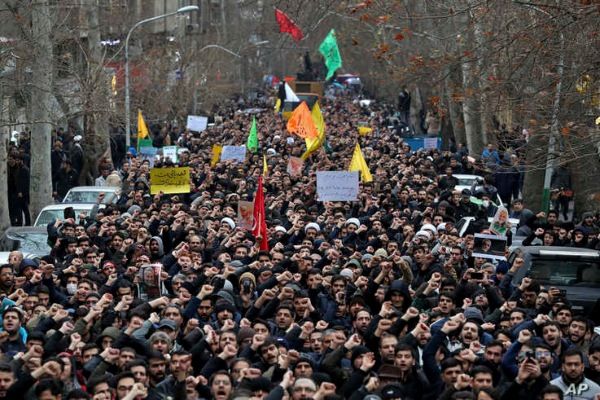Index
- Introduction
- US Iran relations
- The timeline
- How is it affecting the economy?
Introduction
The New Year has started on a sensitive note; the world war three, which was only being mentioned in the memes till now, is beginning to take shape. History accounts for how gruesome wars can be. They break families, people, countries, everything. We have already experienced two wars, which resulted in innocent deaths and chaos. In this article, we will dig deep and discuss everything we know about the latest tensions between the US and IRAN and how it is affecting the economy.
US-Iran Relations

The United States of America and Iran have on and off relationship with each other. Most of the time, the dynamic between the countries is sensitive and escalates quickly. Both countries have maintained no diplomatic relations since 1980. Switzerland and Pakistan act as protecting the power of the US and Iran, respectively, in the other country. Iran was known as Persia during the early nineties and had good relations with the US at that time. In world war two Iran was attacked by the US allies but still maintained neutral relations with the country. Central Intelligence Agency and MI6 helped in a coup to overthrow the government. This strengthened the relationship of the USA with Iran’s new regime. Although after the Iranian revolution in 1979, the relationship became sour. Since then, the US and Iran have continued to have ups and lows in their relationship.
The relationship started deteriorating after Donald Trump became President of the United States of America. In 2018 Iran Nuclear deal was signed, which limits Iran to use its nuclear power. Iran, in return, was shown leniency in rules and regulations in international trade. The sanctions were removed so that the Iranian economy could thrive. The tensions increased when the US-backed out of the deal and put back all the sanctions on Iran. An already damaged economy was left to die because of this decision. In 2019, oil tankers near the UAE were attacked, and the US blamed Iran for it. Iran did not take responsibility for the attack. In June 2019, a US drone was shot down by the Iran military, which claimed that it was in their airspace. The US is adamant that the drone was in International waters. The attack is presumed to be retaliation of US sanctions on Iran’s oil trade. The US restricts the purchase of Iranian oil. These incidents have reached to the point that all the countries fear the possibility of a world war. The world cannot afford another world war.
The Timeline

The US – Iran relations have always been tense, numerous sanctions put by America on Iranian goods, citizens make the relationship sensitive enough to cause war. To understand the current circumstances, let us recall what lead the US and Iran to this situation.
On 29 December, the US, in response to the attack by Iran militia, which killed a US military contractor on 27 December, attacked Iran supported Iraqi and Syrian militia fighters. The decision to strike Iraq and Syria resulted in the death of 25 personnel, and several were left wounded.
On 30 December, the Iraqi militia backed by Iran swore to give an appropriate response to the USA, and the Iraqi government declared the US attack a violation of peace and the common cause of fighting against the Islamic state as the attack resulted in the death of several Iraqi militias who contributed in countering Islamic State extremists.
On 31 December, in response to the constant airstrikes by the US on Iraqi militia, Iraqi extremists attacked the US embassy in Baghdad. The attackers broke the gates of the embassy and set the reception on fire to warn the US about its actions.
On 2 January 2020, it was announced that on the orders of President Donald Trump, the leader of Iran’s Elite Quds Force, Soleimani was killed by the US military near Baghdad. The decision was made based on Soleimani’s involvement in the attacks on American diplomats.
On January 3, after the announcement of Soleimami’s death, several countries were concerned about de-escalating the situation at hand. A Swiss representative was called to talk with the US administration about the killing. Iran’s leader publicly announced retaliation for the attack.
On January 4, US President Donal Trump threatens to attack Iranian cultural sites by tweet. Damaging or attacking cultural sites is considered a war crime by international law — the Iranian leader tweets about the plane crash caused by the US Navy, which killed 290 Iranian passengers.
….targeted 52 Iranian sites (representing the 52 American hostages taken by Iran many years ago), some at a very high level & important to Iran & the Iranian culture, and those targets, and Iran itself, WILL BE HIT VERY FAST AND VERY HARD. The USA wants no more threats!
— Donald J. Trump (@realDonaldTrump) January 4, 2020
On January 5, Iran backs out from the Uranium enrichment restriction, Iraq’s parliament decides to oust US troops from the country.

On January 6, A funeral ceremony is held for Soleimani, and the grieving people crowd the streets of Iran. The US Defense secretary shows his opposition towards the “Attack cultural sites” tweet of President Donald Trump.
On January 8, Iran military fires missiles and attacks US troops in Iraq. No casualties are reported by the US government. President Donald Trump addresses a press conference and ends his speech by assuring strict economic sanctions on Iran.
On January 9, War Powers resolution is put forward and voted to limit the involvement of the President in actions against Iran, to de-escalate the situation.
On January 10, the US put more economic sanctions on Iran; the US rejects the Iraqi government’s request to call back the US troops from Iraq. The EU leaders show concern regarding the possibility of world war three and try to de-escalate the situation.
How is it affecting the economy?

The countries directly affected by this conflict are the United States of America and Iran. The economies of both countries will take a hit. Let us discuss how this tense relationship will affect the economies of the countries worldwide.
Iran

Iran’s economy was on the path of its downfall due to the strict sanctions on oil trade from Iran. These sanctions were lifted due to the Iran nuclear deal. A year after the agreement was signed, Iran’s GDP grew 12.3%. The primary contributors to this increase were the oil and gas industry of Iran; other sectors could not recover as fast as these two. It did not take long for the GDP of the country to fall back to 3.7%. The reinstated sanctions in 2018 added fuel to the fire, which was deteriorating an already dying economy of Iran. The penalties nullified foreign investments in Iran as President Trump intended to. President Trump was determined to bring down the primary source of Iran’s revenue generation. At the beginning of 2018, Iran’s oil production was 3.8 million barrels per day, out of which 2.3 million barrels per day were exported. The oil was imported by countries such as China, Japan, South Korea, Turkey, etc.
In 2019 the export fell to a mere 1 million barrels per day rate. The strict sanctions by the US restrict the country and its allies to have trading relationships with Iran. If the permissions are not lifted, the economy will face inflation, which will keep on worsening. The tensions between the United States of America and Iran will result in the death of Iran’s economy.
The United States of America

America is expected to see a sudden rise in oil prices. Whenever there is turmoil in the middle east, the supply of oil and gasoline decreases leading to high oil prices. This time when the situation has escalated to such as scale rise in oil prices is expected. Although experts deduce that the US is not as dependent on the middle east for oil as it used to be during the 20th century. Right now, the USA is one of the largest producers of crude oil. The optimists are looking at this situation as an opportunity to showcase the independence of the US. The energy industry of the US is consuming less share of the economy compared to yesteryears. This implies that even if the oil prices increase, there is a considerable chance that it will not affect the US economy. Also, if the oil price increases, the largest supplier of crude oil in the US is the USA itself, which means if the costs are increased, it will benefit the American Oil industries. If the US can survive without the help of Iranian oil, then it will be free to back off from a lot of agreements with the middle east countries. The agreements were signed in the desperation of oil by the US government. The US does not need the middle east as it used to need if it thrives in this situation. This is a compelling economic theory, which could be a game-changer for America.
Other parts of the World

The rates are expected to reach new heights as this turmoil in the Middle East is not ready to resolve itself. Whenever tension arises in the Middle East, the security of transportation of oil is increased, which leads to high prices of oil. A country like India, which is highly dependent on oil imports, will face a massive blow due to the rise in oil prices. The GDP of India is already at its lowest; the consumer rate has touched rock bottom. While our finance minister is trying to put money in the hands of citizens to increase consumerism and maintain the flow of the economy. The rise in oil prices will be a big obstacle. For even a slight increase in oil prices, countries face losses of billions. The other reason for concern is the Strait of Hormuz. If Iran, in retaliation to President Donald Trump’s sanction blocks the Strait of Hormuz, the primary route of oil transportation will be disrupted. Other ways will cost more money and security. If Iran attacks the transported oil, then the world will face a significant oil and gasoline crisis.










